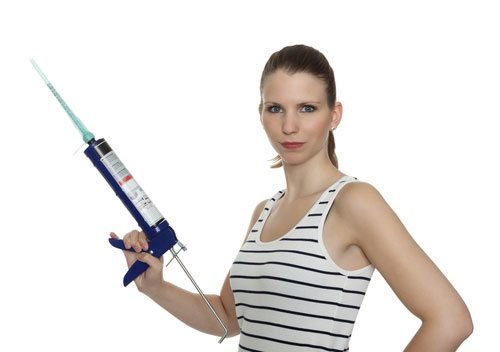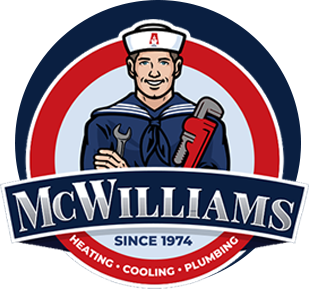
It’s Not Rocket Science
When good houses go bad due to poor efficiency and inconsistent comfort control, homeowners frequently over-think the issue. It’s tempting to gravitate toward complex causes and solutions – and even enduring energy myths – rather than the simple no-brainer option to seal and insulate your home. But the fact is, the most common causes for high energy costs and low comfort today are the same issues that homeowners have faced for generations: air leakage and heat transfer.
Air leakage usually is driven by pressure differentials. When the air pressure indoors is greater or less than the outdoor air pressure, air currents seep out or in through myriad minute cracks and gaps in the home’s structural envelope. Heat and coolness move in and out and moisture can infiltrate to stay. Sealing these openings with caulking or weatherstripping stops air leakage and can result in immediate energy savings of 5 to 10 percent.
Simple physics dictates that heat moves from a hotter zone to a cooler zone. Unfortunately, that motion is usually in the opposite direction of efficiency and comfort. During winter, precious warmth is trying to get out of the house, and during summer, uncomfortable heat is trying to invade. Heat transfers through ceilings and walls mainly by conduction and radiation. Insulation retards heat transfer and improves efficiency and comfort. If your home was built in the 20th century, it’s probably under-insulated by 21st century standards. Expected energy savings from upgrading insulation to the most current U.S. Department of Energy recommendations can be up to 10 percent.
Seal And Save
In a typical home, the cumulative linear length of every crack, gap and crevice in the home’s structural envelope can add up to as much as 2,000 feet. This dismal status quo isn’t because you’ve neglected to seal and insulate your home. Many of these leaks were actually built in during the construction process – particularly if the house was built more than 20 years ago when energy conservation was a lower priority than construction costs. Others are the natural result of the aging process of building materials and years of normal wear and tear.
The most immediate way to quantify the extent of leakage and the location of leaks is to start with an energy audit performed by an HVAC professional. A technician will peform a blower door test to calculate the total amount of air leakage. Technology such as a thermographic camera or a simple smoke pen also can be utilized by the auditor to image the movement of hot and cold air currents, and pinpoint and mark the location of leaks for later sealing by the homeowner.
Simpler do-it-yourself methods also can be used to detect the location of air leaks. Hold a lighted stick of incense up to the margins of doors and windows and observe the smoke stream for signs of deflection due to air currents. For other leaks, turn on the lights in every room and walk the perimeter of the home after dark looking for light leaks that indicate cracks or gaps in the structural envelope.
You’ll discover soon after beginning the process to seal and insulate your home that leaks tend to occur in predictable locations:
- Along the joints between floor and wall, as well as wall-to-wall joints in the interior and exterior.
- Around door frames and windows that open and close.
- At the intersection between the foundation and exterior wall siding.
- Around the penetration points where pipes and electrical conduits pass into the home.
- Along the chimney where it enters the attic.
- Where plumbing vent stacks pass through the ceiling and into the attic.
- In gaps around recessed ceiling light fixtures.
- Around attic hatchways and doors that lead to basement stairs.
Once you take the plunge to seal and insulate your home, you’ll probably find a lot of leaks to seal so invest in a caulking gun. It makes sealing more accurate and less fatiguing, plus enables you to use the more cost-efficient 10-ounce tubes of caulking instead of the smaller single-use tubes. Silicone caulking is generally considered the go-to product for all-purpose household air sealing, indoors and out. It’s suitable to close gaps up to 1/4-inch wide and stays flexible over time, an important factor as wood building materials tend to expand and shrink due to both moisture and drying out. Silicone also can be sticky and hard to apply in certain locations. Less-expensive latex goes on smoother and accepts paint better than silicone; however, it tends to dry and crack as years go by, requiring re-sealing.
Some areas, most notably around plumbing and electrical penetration points, may have odd-shaped gaps that aren’t linear and don’t seal well with caulk. Use expandable spray foam sold in 16-ounce cans to close these openings.
Any surfaces that open and close, such as doors, windows and access hatches, are common suspects for leakage. Though most are sealed with weatherstripping when new, these materials wear with age and leakage results. Gaps between the movable surfaces of doors and windows can be filled with self-adhering foam weatherstripping tape, the simplest fix. At the next level, vinyl or rubber bulb-type weatherstripping provides greater sealing and longer service life at a higher price and more labor-intense installation. Use rubber or aluminum door sweeps to close the yawning air gap between the door and the threshold.
Halting Heat Transfer
Insulation inhibits the movement of heat through solid materials but has little or no effect on air leakage. Installing new insulation may actually conceal air leaks, making them harder to detect. Make sure to seal and insulate your home in that order: seal first, then insulate. Home insulation interferes with the conduction and radiation of heat because the insulating material incorporates millions of pockets of trapped air. That’s the reason home insulation looks light and fluffy; it’s mostly air pockets. Air is a very poor conductor of heat energy so any air-filled material placed between a hot zone and a cold zone slows down the movement of heat.
Two common types of insulation – fiberglass batts and loose-fill cellulose – are installed in the attic, the most common target for home insulation upgrades since heat rises into the attic during winter and conducts and radiates down into living spaces during summer. It’s also the most accessible area in the house to add insulation to existing layers. You can even mix different types of insulation on top of each other to reach the recommended depth.
- Fiberglass batts are roll-out insulation blankets sized for the openings between ceiling joists in the attic or the space between studs inside walls. You’ve probably seen the blankets that look like rolls of pink cotton candy stacked up in your local home center.
- Cellulose is a loose-fill product blown into your attic or wall voids through large hoses under air pressure. It’s composed of pulverized bits of paper – usually recycled newsprint – treated with fire retardant. Cellulose effectively fills all small openings and odd-sized spaces in the attic, resulting in superior coverage, but must usually be installed by professionals with air blowing equipment.
The effectiveness of insulation is expressed by its R-value. “R” is short for resistance, and the more an insulating material resists heat, the higher its R-value. For home applications two figures are relevant: the base R-value per inch and the total R-value at the installed depth. Standard fiberglass batts are rated 3.1 per inch on the R-value scale while high-density fiberglass is around 4. Cellulose loose-fill provides a 3.8 R-value per inch. Optimum insulation R-values are calculated by the U.S. Department Of Energy based on the home’s location on the DOE climate zone map. For a house in East Texas located in climate zone 3, the recommended total R-value for uninsulated attics ranges from R30 to R60. If you’re adding on to an attic with an existing 3-inch layer of insulation, the upgrade layer should provide R25 to R38. Here’s how those numbers translate actual depths:
- For standard fiberglass batts in an uninsulated attic, the depth should be 10 inches to 19 inches. High density fiberglass can be 8 inches to 15 inches. To upgrade existing insulation, 8 inches to 12 inches and 6 inches to 9 inches, respectively, meet DOE requirements.
- Cellulose insulation in new attics should be 8 inches to 16 inches and 6 to 10 inches for upgrades.
For more guidelines to seal and insulate your home in Lufkin, Nacogdoches and surrounding areas, please contact the professionals at McWilliams & Son Heating and Air Conditioning.
Image Provided by Shutterstock.com

